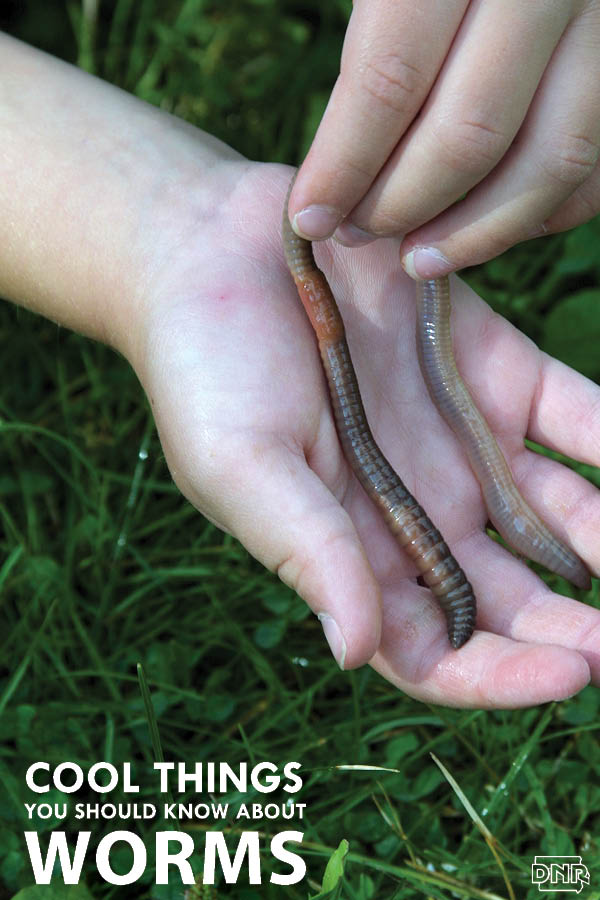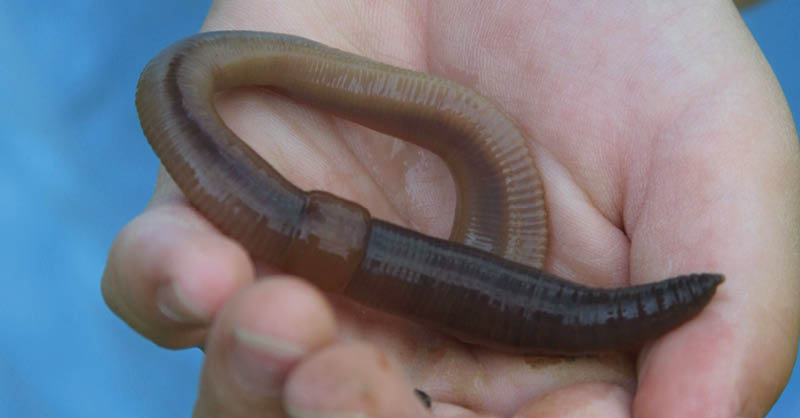 Most of us see earthworms after a long rainstorm, slinking across the sidewalk. You may have even eaten one or two after your friend dared you (although we wouldn’t recommend it!). While most of us dissected these critters in science class, how well do we remember our worm facts?
Most of us see earthworms after a long rainstorm, slinking across the sidewalk. You may have even eaten one or two after your friend dared you (although we wouldn’t recommend it!). While most of us dissected these critters in science class, how well do we remember our worm facts?
Life in the Dark
Earthworms do not have any eyes, ears, teeth or lungs. Don’t be fooled though, they make up for it with the interesting aspects they do have. Like five hearts that squeeze two blood vessels to push blood throughout their little bodies. Earthworms have mucus and little hairs covering their skin that allows them to move through different types of soil. The little burrows they create keep soil healthy and moist.
Instead of breathing through lungs, earthworms breathe through their skin. That’s the reason why we see them so much after a rainstorm. The wet soil inhibits their breathing, which brings the worms to the surface.
Two for One
You may have heard that earthworms have the ability to regenerate their bodies, but, contrary to the myth, you can’t cut an earthworm in half to create two worms. Even though worms lack complex body features, they still have a head. Well, it’s more of an anterior end. The female sex organs are located at the head of the earthworm, and this end controls regeneration. Not all injuries can produce regeneration, but younger worms with less severe wounds can fully recover.
Hermaphrodites
Earthworms have both male and female sex organs, but they still need a partner to reproduce. They exchange sperm laying head to tail after wrapping themselves in a mucus covering. The little bandage-like ring you see on them is called clitellum and grows close to the head of the worm. The clitellum holds the fertilized eggs and eventually secretes them into the ground where new worms will hatch.
Who Do You Know Here?
Earthworms do not originate from Iowa, as the Pleistocene glacier wiped out any native worms from the Midwest more than 10,000 years ago. Worms here today came from Asia and Europe. Carried across the sea through the horticultural trade, these worms have made a home in our gardens and compost piles. However, some of these worms aren’t always helpful. The Asian jumping worms (Amynthas spp.) can create more damage than good in Iowa’s prairie. They consume the ground litter too quickly and can disrupt the natural nutrient cycle.
Vermicomposting
Known as “ecosystem engineers,” worms make perfect friends for your compost pile. You dispose of organic waste and get free compost; the worms get to eat all they want. Talk about a win-win situation. Despite some claims that vermicomposting is a stinky endeavor, not neglecting the compost provides the best solution to a smelly bin. Like making sure to turn and rotate the dirt so it’s aerated. Vermicomposting helps the planet and your garden.
